Tech4Nature Brazil: A Smart Solution for Safeguarding Threatened Mangroves
Tech4Nature is a global partnership launched in 2020 by International Union for Conservation of Nature (IUCN) and Huawei TECH4ALL to scale up success in nature conservation through technology. In Tech4Nature's second phase, Brazil was chosen as one of six host countries, with the mission of improving the effectiveness of Protected and Conserved Areas (PCAs) through digital innovation and the IUCN Green List Standard. A central requirement of this initiative is the active involvement of local communities in governance — an essential factor for lasting conservation results.
On Marajó Island, in the Amazon delta, the Marine Extractive Reserve (RESEX) of Soure was selected as the project site. Created in 2001 after strong advocacy from local fishing and crab-harvesting communities, the RESEX safeguards nearly 30,000 hectares of mangrove and coastal ecosystems. For generations, local families have lived in balance with these ecosystems, depending on the sustainable harvest of the mangrove crab (Ucides cordatus, known locally as the uçá crab) as a key source of food and income. The communities themselves play a decisive role in governance: they are represented in the RESEX’s Deliberative Council and actively contribute to defining rules of sustainable use, monitoring fishing practices, and ensuring that traditional knowledge guides management decisions.
Today, this balance faces new challenges.
Climate change is altering coastal dynamics and threatening mangrove ecosystems, while overfishing and illegal fishing — often carried out by outsiders using unsustainable methods — put additional pressure on crab populations and the livelihoods of over 2,000 families. The inclusion of the Soure RESEX in Tech4Nature reflects not only its ecological importance, but also the strength of its community-based governance. By combining digital tools with traditional knowledge, the project aims to enhance protection of this unique ecosystem and ensure that conservation and community well-being move forward together.
Tech and partnerships: The keys to success
In partnership with Chico Mendes Institute for Biodiversity Conservation ICMBio, Rare Brazil, the Federal University of Para (UFPA) the Federal Institute of Paraíba (IFPB), local associations ASSUREMAS and ACCS, and with the support of federal and state governments, the Tech4Nature project applies cutting-edge technology to strengthen biodiversity conservation and climate resilience in the Soure Marine Extractive Reserve (RESEX) on Marajó Island. Covering nearly 30,000 hectares of mangroves and estuarine ecosystems — an area comparable in size to Malta — this federally managed conservation unit sustains more than 2,000 traditional families who depend directly on the sustainable harvest of the mangrove crab.
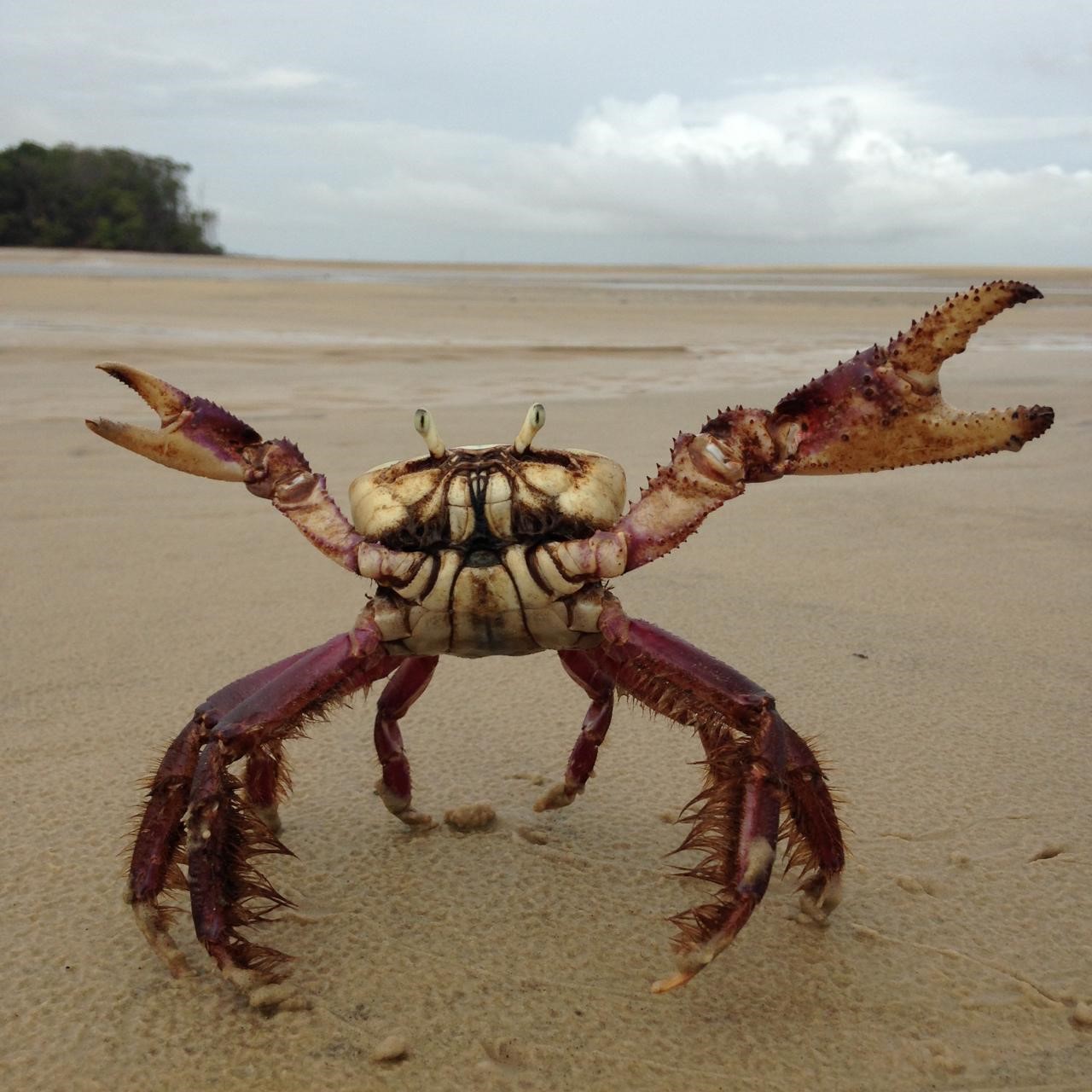
A mangrove crab / Image credit: ICMBio
Component 1: Monitoring biodiversity
One of the main scientific and technical challenges in the RESEX has been the monitoring of mangrove ecosystems, with particular focus on vegetation and the uçá crab populations, which hold both ecological and economic importance. Following the national Monitora Program protocol, ICMBio field teams carry out monitoring only once a year, a task that is highly labor-intensive.
In the case of crabs, the protocol centers on two variables: the number of active burrows and the diameter of active open burrows. Measuring burrow dimensions requires researchers to use calipers in unstable, muddy terrain, where manual errors are common — even slight changes to a burrow’s edge can distort results. These measurements are crucial because population density, spatial distribution, and size structure are all estimated from them. In particular, burrow diameter allows ICMBio to assess whether individuals are juveniles or adults, providing scientific evidence on the species’ extractive potential — that is, the proportion of adults above sexual maturity that can be harvested sustainably. This information is useful for decision-making by management, such as setting harvest limits or designating areas for preservation or extractive use.
-
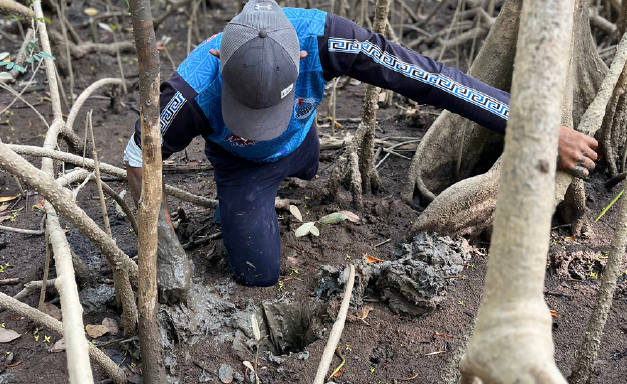
Image credit: ICMBio -
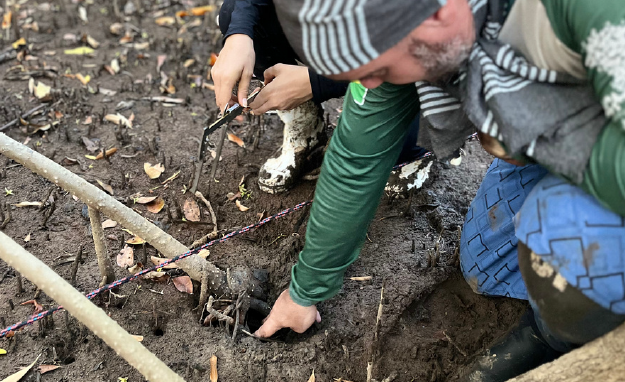
Image credit: ICMBio / Measuring burrow diameter
Huawei’s cloud and analytics technologies are set to transform this process. Images of the mangrove plots will be captured in the field and uploaded to a secure cloud platform. Once stored, the photos will be processed to:
- Identify and measure multiple crab burrows in a single image, significantly increasing efficiency and scale compared to manual methods.
- Classify the condition of burrows (open, closed, active, or abandoned), which are critical ecological indicators of both crab population health and mangrove soil dynamics.
- Provide size-based population data, distinguishing juveniles from adults and enabling science-based decisions on fishing regulations and conservation strategies.
This innovative system addresses the limitations of scale, frequency, and accuracy inherent in traditional monitoring methods. The solution will optimize the allocation of field resources, enable more robust population estimates, and provide data-driven inputs for RESEX management and conservation planning.
Component 2: Monitoring Climate Change with Environmental Sensors
Complementing biodiversity monitoring, the project is also addressing the broader systemic challenge of climate change. The Federal University of Pará (UFPA) developed an innovative, low-cost environmental sensor system tailored to the extreme conditions of mangrove ecosystems. Commercial equipment available in the global market is prohibitively expensive and ill-suited for large-scale deployment in areas as vast as the Soure RESEX, which spans nearly 300 km².
Monitoring climate change in mangroves presents unique difficulties:
- Logistical barriers: the terrain is formed by dense mangrove roots and intertidal mudflats, which are extremely unstable and accessible only during short low-tide windows.
- Environmental stress: the humid, salty air is highly corrosive to electronic devices, rapidly degrading conventional equipment.
- Large-scale coverage: the vast size of the RESEX makes it impossible to rely on costly imported monitoring devices for long-term use, as maintenance and replacement would be economically unfeasible.
The UFPA-designed devices integrate environmental sensors capable of measuring key variables such as:
- Water salinity
- Water temperature
- Water level
- Air temperature
- Atmospheric pressure
- Wind intensity and direction
- Precipitation amount
The sensors automatically collect data and it through cellular network chips, creating a near real-time stream of environmental information. Their innovative design allows them to withstand the humid, corrosive, and muddy conditions of the mangroves, where most off-the-shelf equipment would rapidly deteriorate.
-

Image credit: LAPMAR/UFPA / Solar-powered sensor array -
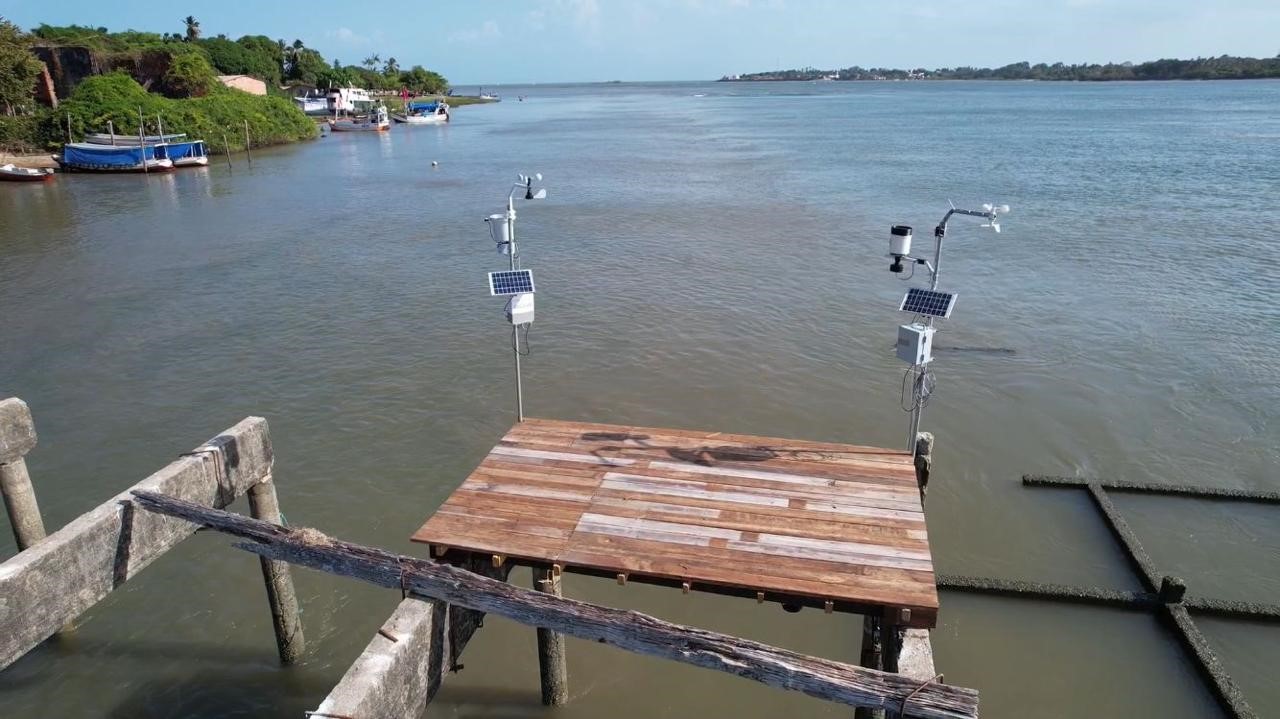
Image credit: LAPMAR/UFPA
By using these sensors, data collection becomes continuous rather than seasonal, enabling scientists and policymakers to:
- Track long-term environmental changes in the mangrove ecosystem.
- Correlate these changes with crab population dynamics obtained from AI monitoring.
- Anticipate the impacts of climate change on the ecosystem.
- Provide government agencies and communities with reliable scientific evidence to design long-term public policies for conservation and community resilience.
Most importantly, because the solution is locally designed and low-cost, it provides a permanent alternative to expensive imported . Instead of depending on sporadic purchases or donations, Brazilian authorities will have access to a sustainable tool that can be replicated in other conservation areas, ensuring resilience and scalability for the future.
Calling on the community
Critically, the project’s success depends on seamless community integration; it must function as a tool developed with and for the local population, emphasizing capacity building, co-design, and tangible benefits to enhance their autonomy and decision-making power. In this sense, the project design emphasizes co-development and capacity building to ensure the technology is accessible, maintainable, and directly beneficial to local resource users, thereby strengthening their autonomous management capabilities rather than replacing existing knowledge.
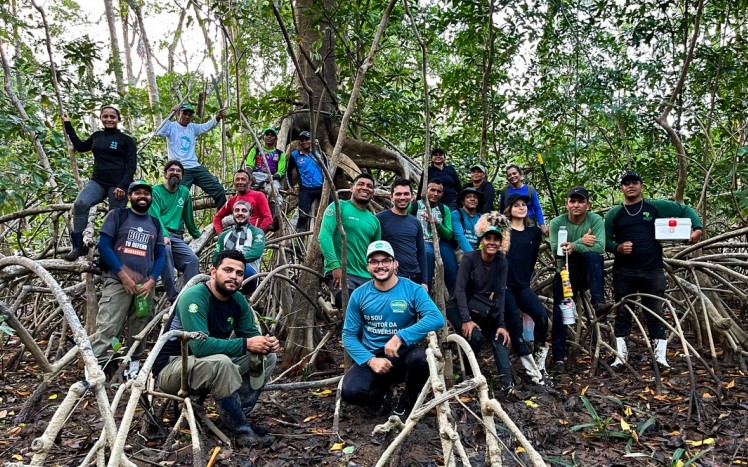
Image credit: RARE / The team in the field
The work in Soure extends far beyond protecting a single reserve, once it creates a proof of concept capable of inspiring nationwide change. Immediate next steps include finalizing the deployment of technology, training local users, and initiating continuous data collection.
Next steps:
- Create a cloud data repository (2025 Q3-Q4): Huawei Cloud will be used to create a secure data repository accessible to ICMBio and partners to drive efficiency, accuracy, scalability, and the replication of the model in other protected areas.
- Present the initial results at COP30 (Belem) in November 2025: This can formalize the position of Brazil as a success story in the use of technology for conservation in tropical mangroves.
However, the project’s ultimate outcomes are far more ambitious: by demonstrating a successful, integrated tech-conservation model, it seeks to establish an evidence-based national blueprint that promotes public policy, thus supporting the adoption of similar technological solutions in protected areas across Brazil.
Over 55 other Federal Protected Areas with mangroves have the potential to replicate the cloud and AI solution. Simultaneously, it strives to deliver tangible local impact by strengthening community voice, securing livelihoods, and safeguarding resources—ensuring the mangrove continues to sustain future generations.
More than a pilot project, this partnership merges innovation with tradition to build a sustainable future for both the Amazon and its people.
Learn more about the Tech4Nature global partnership.
Co-authors
Beatriz Barros Aydos, Programme Officer – IUCN Brazil
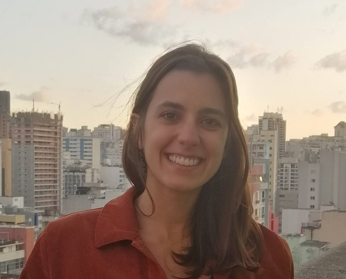
Beatriz is a biologist specializing in Protected Natural Areas (Universidad Autónoma de Madrid, 2019). She is currently Program Officer for Brazil at the International Union for Conservation of Nature – South America (IUCN-SUR), working on restoration and conservation projects. Beatriz is a member of the IUCN World Commission on Protected Areas (WCPA) and of the research group Collaborative Conservation in Protected Areas: A New Management Paradigm at the University of São Paulo (USP).
Julia Machado Lima, Project Manager, Business Environment Department

Julia trained in International Relations at the University of Brasília. She has worked in the Huawei Brazil team in the Business Environment Department since 2024, where she provides support in coordinating Huawei's social value projects in partnership with NGOs, international organizations, and federal government entities.
Disclaimer: Any views and/or opinions expressed in this post by individual authors or contributors are their personal views and/or opinions and do not necessarily reflect the views and/or opinions of Huawei Technologies.




Leave a Comment